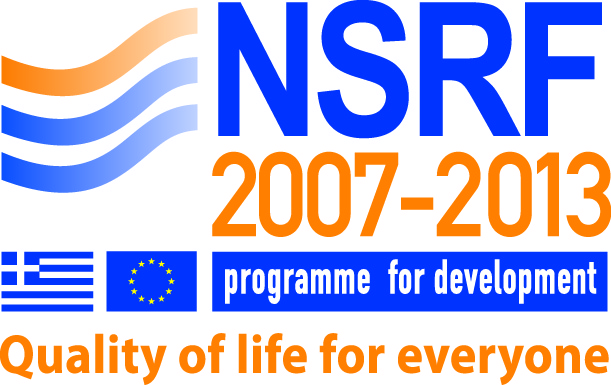Please use this identifier to cite or link to this item:
https://olympias.lib.uoi.gr/jspui/handle/123456789/39586Full metadata record
| DC Field | Value | Language |
|---|---|---|
| dc.contributor.author | Vardakas, Georgios | en |
| dc.date.accessioned | 2025-10-30T08:28:52Z | - |
| dc.date.available | 2025-10-30T08:28:52Z | - |
| dc.identifier.uri | https://olympias.lib.uoi.gr/jspui/handle/123456789/39586 | - |
| dc.rights | CC0 1.0 Universal | * |
| dc.rights.uri | http://creativecommons.org/publicdomain/zero/1.0/ | * |
| dc.subject | Data clustering | en |
| dc.subject | Deep learning | en |
| dc.subject | Unimodality testing | en |
| dc.subject | Estimating the number of clusters | en |
| dc.subject | Machine learning | en |
| dc.title | Clustering Methods based on Deep Learning and Unimodality Testing | en |
| dc.type | doctoralThesis | en |
| heal.type | doctoralThesis | el |
| heal.type.en | Doctoral thesis | en |
| heal.type.el | Διδακτορική διατριβή | el |
| heal.classification | Machine Learning | en |
| heal.dateAvailable | 2025-10-30T08:29:54Z | - |
| heal.language | en | el |
| heal.access | free | el |
| heal.recordProvider | Πανεπιστήμιο Ιωαννίνων. Πολυτεχνική Σχολή | el |
| heal.publicationDate | 2025-10-22 | - |
| heal.abstract | Data clustering is the process of partitioning a dataset into a finite set of groups, or clusters, such that data points within each cluster exhibit intra-cluster similarity, while those belonging to different clusters are characterized by inter-cluster dissimilarity. Clustering remains a challenging task due to the inherent complexity of uncovering meaningful structures within data. Revealing these hidden structures provides valuable insights and facilitates a deeper understanding of the underlying patterns. This thesis concerns the development, implementation and evaluation of novel clustering methodologies mainly focused on three important problems: i) partitional clustering in both Euclidean and kernel spaces, ii) unimodality-based clustering, which incorporates the concept of unimodality into the clustering process, and iii) deep clustering, which leverages the representational power of deep learning methods. We first introduce global k-means++, a method developed to address the initialization challenges inherent in the standard k-means algorithm. The approach integrates the incremental strategy of global k-means with the probabilistic center selection mechanism of k-means++, effectively combining the strengths of both techniques. The resulting synergy delivers high-quality clustering solutions while significantly reducing the computational cost typically associated with global k-means. Furthermore, we extend this concept from Euclidean to kernel space by proposing global kernel k-means++, an algorithm specifically designed to overcome the initialization problem in kernel k-means. The optimization effectiveness of both global k-means variants is thoroughly validated through extensive experimental evaluation. Afterwards, we present UniForCE, a clustering method that simultaneously partitions data and estimates the number of clusters k. UniForCE introduces a novel notion of locally unimodal clusters, focusing on unimodality at local regions of the data density rather than in the entire cluster. By identifying unimodal pairs of neighboring subclusters, the method aggregates them into larger, statistically coherent structures via a unimodality graph. This flexible formulation enables the discovery of arbitrarily shaped clusters. A statistical test determines unimodal pairs, and clustering is achieved with automatic estimation k by detecting the number of connected components in the unimodality graph. Extensive experiments on synthetic and real datasets validate both the conceptual soundness of the method and its practical effectiveness. Furthermore, we introduce the soft silhouette score, a generalization of the widely used silhouette measure that accommodates probabilistic cluster assignments. Building on this differentiable measure, we develop an autoencoder-based deep clustering method utilizing the soft silhouette score. Our method guides the learned latent representations to form clusters that are both compact and well-separated. This property is crucial in real-world applications, as simultaneously ensuring compactness and separability guarantees that clusters are not only densely packed but also clearly distinct from each other. We evaluate our method on a variety of benchmark datasets and against state-of-the-art methods to demonstrate that it outperforms established deep clustering approaches, highlighting the effectiveness of the soft silhouette score as a principled objective for improving the quality of learned latent representations. Finally, we present the neural implicit maximum likelihood clustering, which is a neural-network-based approach that frames clustering as a generative task within the Implicit Maximum Likelihood Estimation framework. By adapting ideas from ClusterGAN, our method avoids several well-known shortcomings of GAN-based clustering while maintaining a simple and stable training objective. The method performs particularly well on small datasets, with experimental comparisons against both deep and conventional clustering algorithms underscoring its competitive potential. A notable strength of our method is its ability to capture diverse cluster geometries without requiring hyperparameter tuning. Experiments on synthetic datasets show that the method can successfully cluster both cloud-shaped and ring-shaped data. | en |
| heal.advisorName | Likas, Aristidis | en |
| heal.committeeMemberName | Likas, Aristidis | en |
| heal.committeeMemberName | Blekas, Konstantinos | en |
| heal.committeeMemberName | Nikou, Christophoros | en |
| heal.committeeMemberName | Tefas, Anastasios | en |
| heal.committeeMemberName | Vouros, George | en |
| heal.committeeMemberName | Skianis, Konstantinos | en |
| heal.committeeMemberName | Voulodimos, Athanasios | en |
| heal.academicPublisher | Πανεπιστήμιο Ιωαννίνων. Πολυτεχνική Σχολή. Τμήμα Μηχανικών Ηλεκτρονικών Υπολογιστών και Πληροφορικής | el |
| heal.academicPublisherID | uoi | el |
| heal.fullTextAvailability | true | - |
| Appears in Collections: | Διδακτορικές Διατριβές - ΜΗΥΠ | |
Files in This Item:
| File | Description | Size | Format | |
|---|---|---|---|---|
| PhD_Thesis.pdf | 52.27 MB | Adobe PDF | View/Open |
This item is licensed under a Creative Commons License





